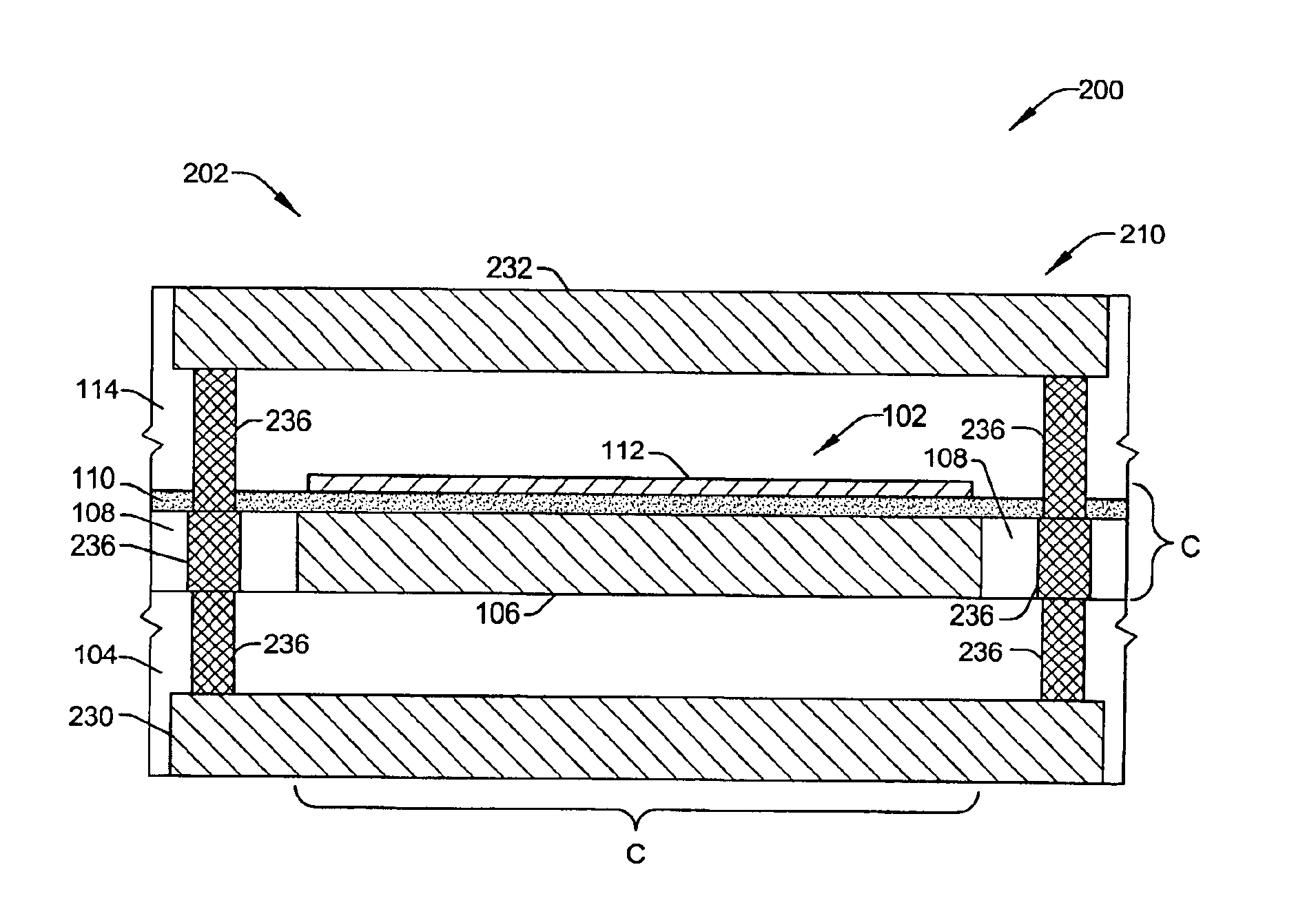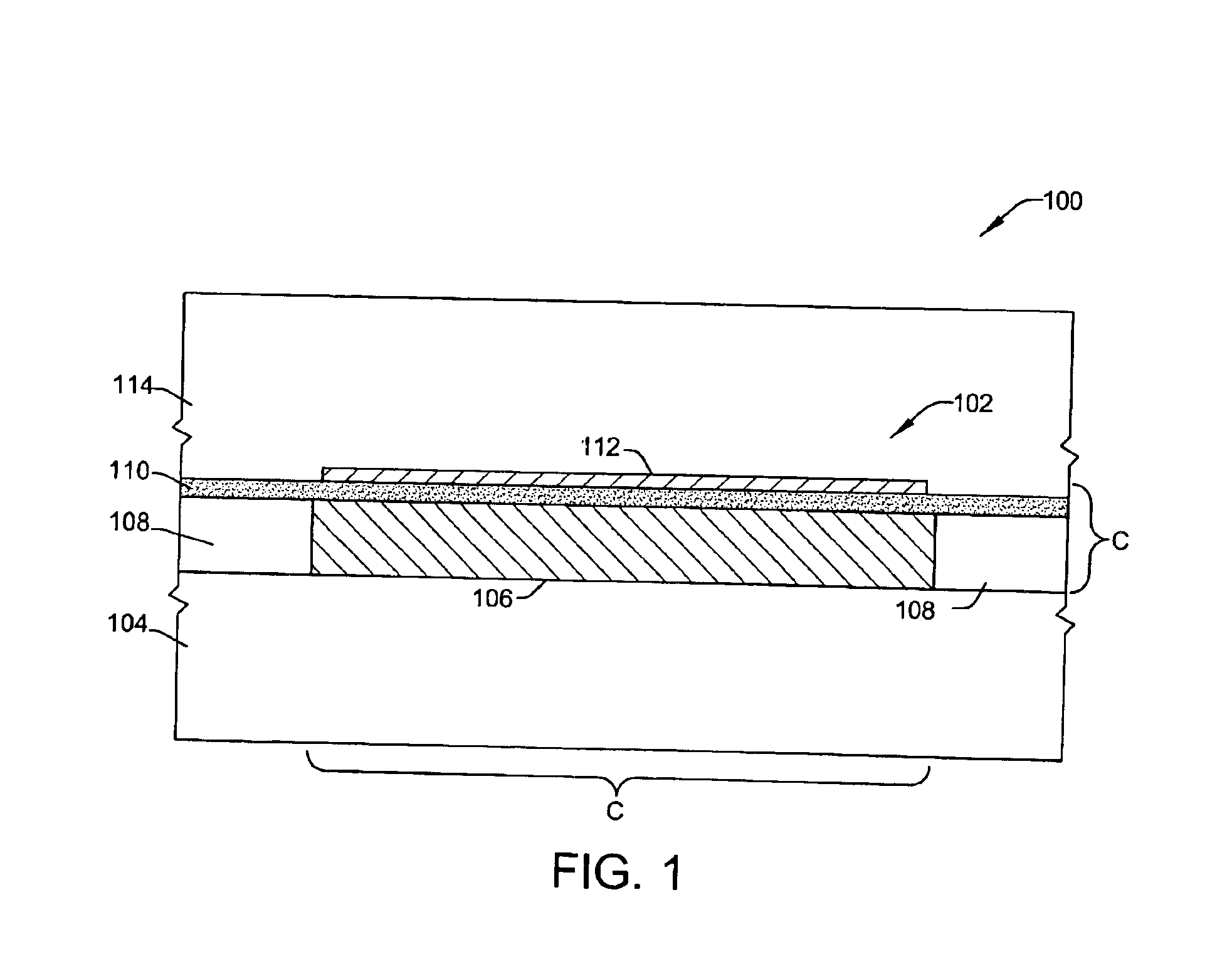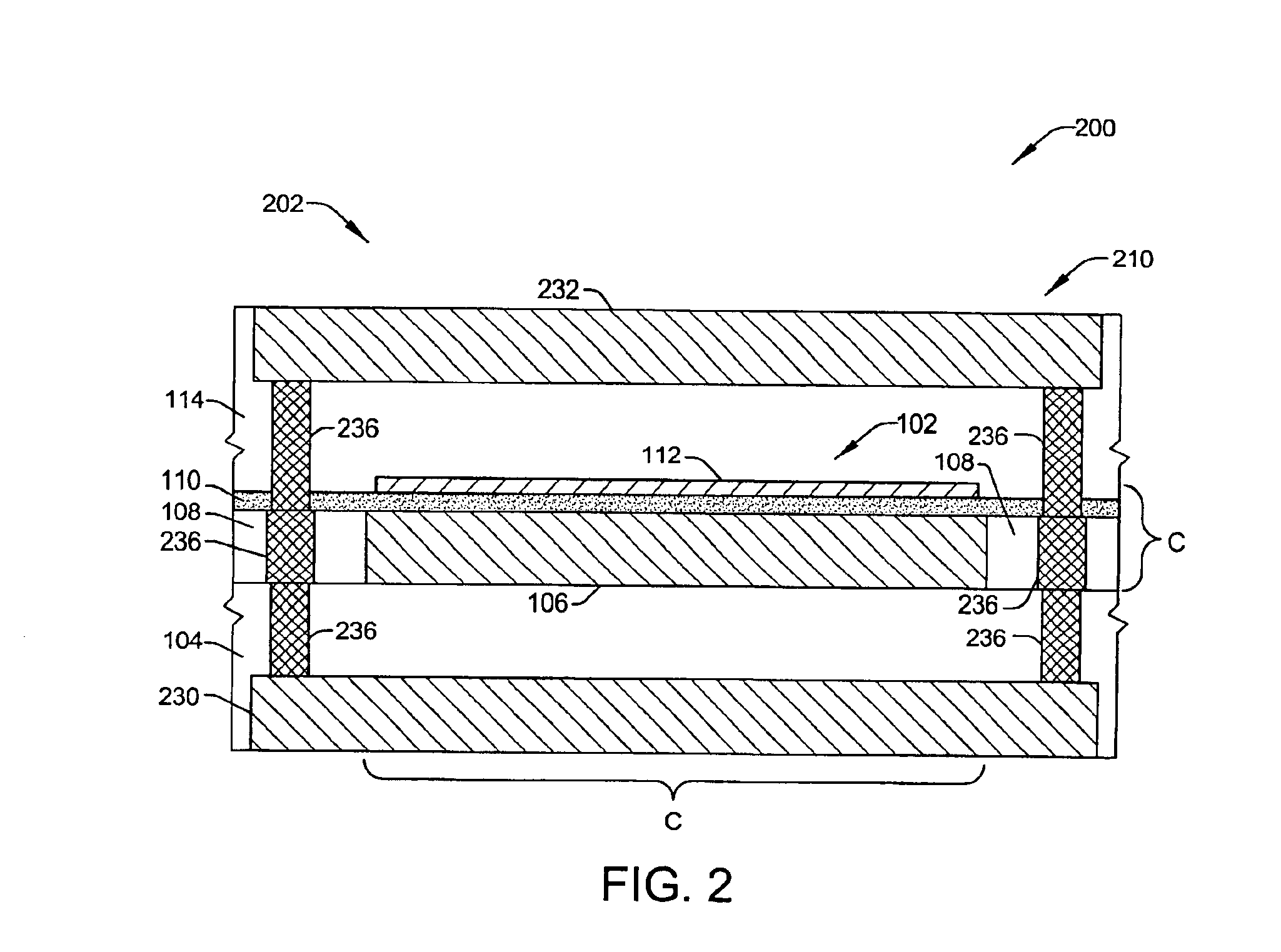Shielded planar capacitor
- Summary
- Abstract
- Description
- Claims
- Application Information
AI Technical Summary
Benefits of technology
Problems solved by technology
Method used
Image
Examples
Embodiment Construction
[0024]The present invention will now be described with reference to the attached drawings, wherein like reference numerals are used to refer to like elements throughout. The invention relates to a shielded planar capacitor formed within an enclosed Faraday cage during interconnect metal level processing of integrated circuits and other devices. One or more implementations of the invention are hereinafter illustrated and described in the context of the formation of the planar capacitor and the Faraday cage in semiconductor devices, utilizing etch-stop layers, isolation layers, tantalum, and interconnect metal layers. However, it will be appreciated by those skilled in the art that the invention is not limited to the exemplary implementations illustrated and described hereinafter. In particular, a variety of such materials may be used to form the structures discussed.
[0025]As previously indicated, because of increasing device densities and operational speeds, reduction of the delay ti...
PUM
 Login to View More
Login to View More Abstract
Description
Claims
Application Information
 Login to View More
Login to View More - R&D
- Intellectual Property
- Life Sciences
- Materials
- Tech Scout
- Unparalleled Data Quality
- Higher Quality Content
- 60% Fewer Hallucinations
Browse by: Latest US Patents, China's latest patents, Technical Efficacy Thesaurus, Application Domain, Technology Topic, Popular Technical Reports.
© 2025 PatSnap. All rights reserved.Legal|Privacy policy|Modern Slavery Act Transparency Statement|Sitemap|About US| Contact US: help@patsnap.com



